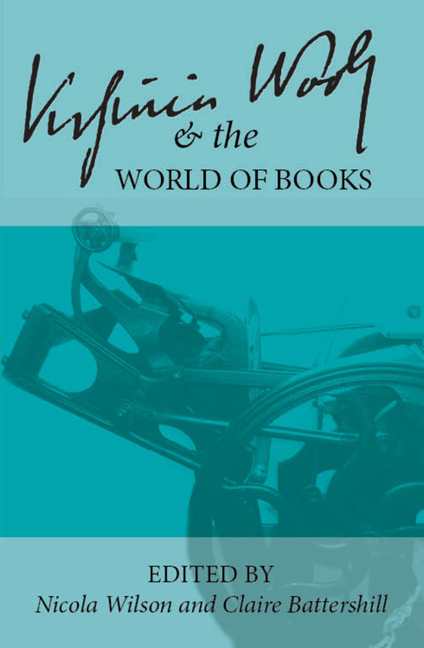 Virginia Woolf and the World of Books
Virginia Woolf and the World of Books Book contents
- Frontmatter
- Contents
- Introduction
- List of Abbreviations
- Keynote
- In the Archives
- Craftsmanship
- The Hogarth Press
- Hours in A Library
- Hours in a Library: Virginia Woolf and Leslie Stephen
- Two Libraries: Reading A Room of One's Own and Margaret Oliphant's “The Library Window”
- Bibliographers, Booksellers, and Collectors of the Hogarth Press
- The Art of the Book
- The Art of the Narrative
- Making New Books: Creative Approaches
- The Book in the World: Woolf's Global Reception
- Editing and Teaching Woolf
- Intertextuality
- Lives in Writing
- Notes on Contributors
Hours in a Library: Virginia Woolf and Leslie Stephen
from Hours in A Library
- Frontmatter
- Contents
- Introduction
- List of Abbreviations
- Keynote
- In the Archives
- Craftsmanship
- The Hogarth Press
- Hours in A Library
- Hours in a Library: Virginia Woolf and Leslie Stephen
- Two Libraries: Reading A Room of One's Own and Margaret Oliphant's “The Library Window”
- Bibliographers, Booksellers, and Collectors of the Hogarth Press
- The Art of the Book
- The Art of the Narrative
- Making New Books: Creative Approaches
- The Book in the World: Woolf's Global Reception
- Editing and Teaching Woolf
- Intertextuality
- Lives in Writing
- Notes on Contributors
Summary
Virginia Woolf 's body of work contains within it a developing line of sceptical thought on the usefulness of the traditional library for women, marked by what can be seen as a critical highpoint in her powerful polemical text, A Room of One's Own (1929). That text in particular articulates the different problems that such libraries presented: their suspicion both of women, manifesting in a refusal of entry or a hostile environment, and of women's work, leading to a dearth of material written by women held inside their collections.
Critics have provided detailed insight into Woolf 's antipathy towards what Diane Gillespie terms “institutional libraries”:
Institutional libraries, like those of the great English universities, are traditional, protected places designed mainly for the sedentary specialists of her description. A woman may love learning, but her access to such libraries is limited by her sex…She may need not only her own private space and sufficient income, but also her own library. (Gillespie par. 2)
As Gillespie suggests in her essay, Woolf found libraries such as these (for example the British Library, featured memorably in Jacob's Room (1922) and A Room of One's Own) inherently male: ruled by men, protected by men, and filled with books by men. Woolf 's solution lay in a different type of library, one where books were used rather than locked up, visitors—women included—were welcomed rather than turned away, and the collections included titles from both men and women authors.
Despite this negative experience of the institutional library, Woolf also writes of the positive experience she had of a different library, at the study of 22 Hyde Park Gate. This paper aims to solve two questions: how are these contrasting representations reconcilable, and how is it that her father, Sir Leslie Stephen, is featured in both. In order to answer these questions, I will be discussing several texts that demonstrate how Woolf's allusions to Stephen and his work take a different tone depending on her purpose.
Starting at that first library in her family home, Woolf 's formative years spent in her father's study have been referred to extensively in Woolf scholarship, and for obvious reason.
- Type
- Chapter
- Information
- Virginia Woolf and the World of BooksSelected Papers from the Twenty-seventh Annual International Conference on Virginia Woolf, pp. 102 - 108Publisher: Liverpool University PressPrint publication year: 2018
